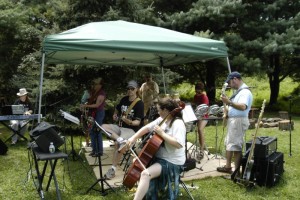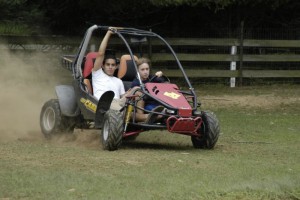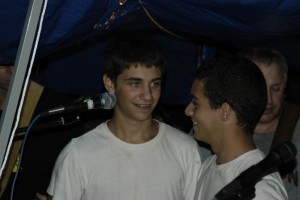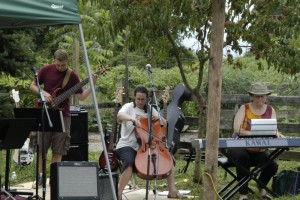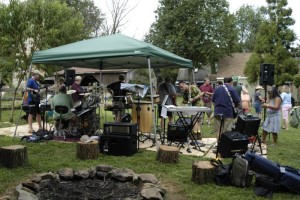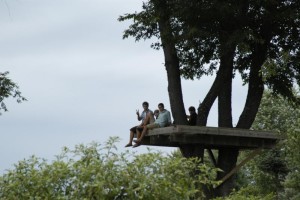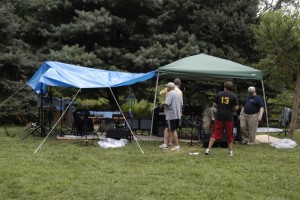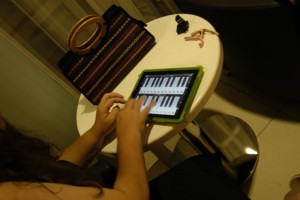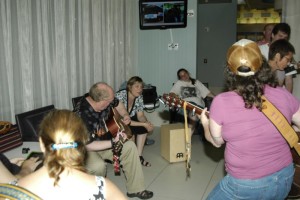Sweaty palms, shaking hands, nervous stomachs. Years after the first violin or piano recital, former music students can still remember the symptoms of anxiety. But the children’s music recital is a rite of passage: How do we make it easier for them?
Performance anxiety is a fact of life, and it isn’t limited to kids. Adults, including both recreational, and professional musicians, can both freeze from nerves on stage. Indeed, stage fright, is one of the most common social phobias, closely related to the fear of public speaking. At its most basic, stage fright is a fear of looking foolish in front of others, or failing at a task in a public setting. But music teachers and parents can help their students and children deal with this common phobia.
Symptoms and Effects of Performance Anxiety
Some amount of anxiety is normal before a performance, and indeed, professional musicians learn to channel the adrenaline of stage fright into their recitals. In most cases, young performers learn to cope with stage fright simply by gaining a bit of experience.
But sometimes the problem is more serious, and in severe cases, stage fright can completely undermine the benefits of giving a performance. Sometimes, stage nerves make a performance impossible. A student’s hands or legs may shake so much that it is impossible to play a note or push a pedal on a piano or an organ. Or a memory lapse may take place, a frightening occurrence performers describe as awakening from the dream-state of a performance only to find that they have no idea where they are in a piece of music, or even, what piece of music they are playing. At its most severe, stage fright can blossom into a full-fledged panic attack or anxiety attack.
Preventing and Overcoming Stage Fright
In most cases, treating stage fright is a matter of prevention. Acclimating, or getting used to the performance process, is the first step. Teachers can help beginning performers by scheduling no-stress or low-stress performances that take place in non-threatening environments such as a teacher’s living room, a class-room, or even a friendly local coffee shop (serving cookies also helps). These practice performances can be as low key as asking a student to stay three minutes longer to play his piece for the next student family that walks in the door. Or (even) play for the dog or the cat.
In a very real sense, stage fright is a matter of conscience. Students know how well prepared they are, and whether or not they have practiced effectively. In most cases, the more confident a student is in the ability to perform a piece of music, the less severe stage fright will be. For a student’s first few performances, teachers should choose easier works that the student likes and feels secure about performing. Virtually every instrument has a literature of student performances, and many composers who write for students create works that sound more impressively difficult than they really are. These pieces are often fun to play, and they boost a student’s confidence.
Ways to Boost Confidence
When I’m sure the student can do it, I ask the student to play a piece, or a section of the piece, with his or her eyes closed. Assuming there aren’t any huge jumps, it’s amazing how many students are able to accomplish this. practicing with your eyes closed is another way to convince yourself that you really do know the piece inside outside and backwards.
And we play the “interruption game,” in which the student’s job is to keep playing — no matter what. “No matter what” can include me turning the lights on and off, yelping suddenly in the middle of the piece, slamming a door, waving my hands in front of the students music, juggling, making funny faces, or jumping up and down. This is a really fun game with a group of kids, although for sanity’s sake, give some ground rules: No touching the performer and taking turns being the interruptor are two good ones that keep things from getting out of control. This game is so successful that students beg to play it.
Familiarity with the performance process helps relieve anxiety. Some teachers have full-fledged recital rehearsals where students practice walking up to the stage, performing for each other, and bowing,
One of the most common causes of stage fright in music recitals is the performance anxiety associated with playing from memory. Unless the student is truly on a path to being college music major or a concert artist, playing from memory is something that can be introduced very slowly or avoided all together. Of course, a student who has memorized a piece is better prepared to perform it, but there’s no reason not to let a child or an adult recreational player have the security of sheet music if they want it.
Adults, too, are susceptible to stage fright. Some use prescription drugs such as beta-blockers under the close supervision of a medical doctor. Others undergo hypnotherapy for their performance anxiety. Meditating and visualizing a successful performance are other common techniques.
With a combination of reasonable expectations and repertoire, a friendly, non-threatening environment, adequate practice, and a bit of experience, the process of performing music can become what it is meant to be: an opportunity to share a musician’s art, rather than an anxiety-packed ordeal.


